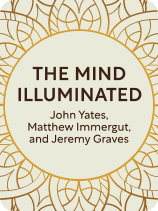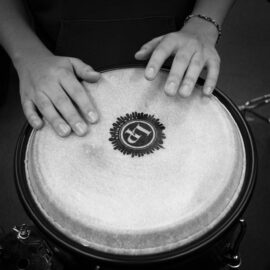

This article is an excerpt from the Shortform book guide to "The Mind Illuminated" by Culadasa, Matthew Immergut, and Jeremy Graves. Shortform has the world's best summaries and analyses of books you should be reading.
Like this article? Sign up for a free trial here.
How do you mentally and physically prepare for meditation? What type of mindset should you be in to meditate?
While meditation is a relaxing practice, it still requires preparation like any other exercise. With the help of The Mind Illuminated, you can learn how to prepare for meditation by getting into the right gear, physically and mentally.
Let’s look at what you should do before getting on the mat.
Before You Begin the Basic Meditation
According to the authors, any time you sit down to meditate, you must first take time to ease in both physically and mentally. This preparation reduces the chances that you’ll face distracting sensations, thoughts, and feelings during your basic meditation.
(Shortform note: Building mental and physical transition time between tasks may be particularly important for meditators with ADHD: Abrupt transitions can leave people with ADHD feeling tired, frustrated, or discombobulated.)
To prepare for meditation, ease into your meditation session physically by finding a stable, comfortable position on a chair or the floor. If you choose the latter, cross your legs or tuck your ankles under your opposite leg’s knee or thigh. These poses provide stability so you’re less likely to adjust your position (which would be distracting). Next, straighten your back so your head and neck are aligned. This position minimizes neck and back pain, which in turn minimizes distraction. Finally, keep your eyes closed, especially if you’re new to meditation—this also makes it easier to avoid distractions.
(Shortform note: A recent study supports the value of closing your eyes while meditating; it found that meditators with closed eyes achieve greater mindfulness than those who meditate with their eyes open.)
Next, the authors recommend mentally preparing for meditation by reflecting on two questions:
- What’s your goal for this meditation session? Setting a small, achievable goal before you meditate (such as “focus on pleasurable sensations”) prevents you from setting an unreasonable goal you’ll have trouble achieving (such as “ignore all distractions”).
- What distractions might get in the way of that goal? For instance, a work-related worry might be likely to distract you. Mentally listing such distractions in advance makes it easier to recognize them as distractions so you can refocus on your focal point.
| Additional Advice for Easing Into Your Meditation Session In Mindfulness in Plain English, Bhante Gunaratana provides additional insights into and tips on easing into your meditation session physically and mentally. Easing in physically: Gunaratana shares the authors’ view that an effective meditation position prioritizes stability and comfort for the sake of minimizing distractions and that it’s therefore worthwhile to find this position before you begin meditating. Gunaratana provides another reason why keeping a straight back is particularly important: It helps you remain alert, preventing you from falling asleep. He says you can further improve your comfort by removing your shoes and wearing loose clothing when you meditate. Shoes and tight clothes can restrict blood flow in your body, which could produce uncomfortable distractions. Easing in mentally: In contrast to the authors of TMI, Gunaratana says you should avoid going into a meditation session with any expectations (such as a particular goal). The purpose of meditation, Gunaratana says, is to observe reality—and expectations crowd your mind with ideas and opinions, making it hard to see reality. Instead, treat meditation like an experiment: Simply let the meditation unfold, and don’t worry about what you will or won’t achieve. If you’re unsure whether to follow Gunaratana’s goal-free approach or the goal-oriented approach that the authors of TMI recommend, sample both approaches. Meditate several times without a goal, then meditate several times with one. Compare your experiences to determine which approach best accomplishes your overall purpose for meditating. |
The Five-Step Basic Meditation
Once you’ve eased into your meditation session, you’re ready to begin the basic meditation that you’ll continue practicing through all the phases. According to the authors, this meditation helps you cultivate strong concentration and mindfulness. As previously noted, both of these mental states improve your life and are essential for reaching enlightenment. We’ve organized the authors’ basic meditation into five steps that have you progressively narrow your focal point while maintaining background awareness.
Step 1: Make sensory input in the present moment your focal point while maintaining background awareness of everything else. For instance, focus on the smell of the room and the air’s temperature. If something in your background awareness (anything that’s not sensory input in the present moment) grabs your attention, such as a thought about something on your to-do list, simply notice it. Then, gently return your attention to your focal point.
Step 2: Make bodily sensations your focal point while maintaining background awareness of everything else. For instance, notice your heartbeat. Once again, if something in your background awareness grabs your attention—such as a sound, smell, memory, or thought—simply notice it, then gently return your attention to your focal point.
Step 3: Repeat Step 2, with one difference—make any breath-related sensations your focal point. For instance, notice the feeling of your stomach touching your shirt as you exhale. Keep your breathing natural while doing this.
Step 4: Repeat Step 3, but with a narrower focal point: breath-related sensations in your nose. You may find this easiest if you breathe only through your nose, as the high volume of air passing through your narrow nostrils will produce subtle but noticeable sensations.
Step 5: Maintain Step 4 for the duration of your meditation session (15 or more minutes).
Comparing This Meditation Approach to Another Well-Known Approach
Let’s compare the steps of this meditation to the advice found in one of the best-selling meditation books: Wherever You Go, There You Are (1994) by Jon Kabat-Zinn. Kabat-Zinn is often credited with bringing a secular version of mindfulness meditation to the West. He’s perhaps best known for developing Mindfulness-Based Stress Reduction (MBSR), a widely-used program that many experts believe supports mental health.
Kabat-Zinn’s meditation advice sometimes overlaps with that of the authors of TMI:
- Kabat-Zinn also frames meditation as a way to hone your mindfulness skills. He shares the authors’ view that mindfulness is a mental state that will improve your life.
- Like the authors of TMI, Kabat-Zinn identifies your breath as a valuable focal point for cultivating concentration. He says you can direct your attention back to your breath any time your mind wanders.
- The authors of TMI advocate for patience by recommending you always gently redirect your attention back to your breath. Similarly, Kabat-Zinn underscores the importance of patience by saying you should be kind to yourself when your mind wanders.
There are also several key differences between Kabat-Zinn’s approach and that of the authors of TMI. First, Kabat-Zinn argues that there’s no single, correct way to meditate. This perspective contrasts sharply with that of the authors of TMI. They imply that there is a correct way to meditate by providing detailed steps in which you progressively narrow your focal point and by recommending a certain duration for your session.
Second, while the authors of TMI say to focus on sensations in the present moment, some of the meditations Kabat-Zinn recommends have you engage in visualizations. For instance, his “Mountain Meditation” has you imagine a mountain remaining unchanged as seasonal weather surrounds it, then imagining yourself as this mountain.
These key differences may be due to differences in the authors’ beliefs about the purpose of meditation. In TMI, the authors’ emphasis on following a correct approach reflects their belief that meditation is mental training, and their emphasis on staying in the present moment arguably reflects enlightenment’s goal of understanding how life really is. By contrast, Kabat-Zinn makes very few mentions of enlightenment in his book—when he mentions the word, it’s in the colloquial sense, as an adjective for “awareness.” His de-emphasis of enlightenment suggests that he sees mindfulness itself as the purpose of meditation, hence why his method doesn’t include strict instructions on meeting a certain goal or meditating in a certain way—simply achieving mindfulness is enough.

———End of Preview———
Like what you just read? Read the rest of the world's best book summary and analysis of Culadasa, Matthew Immergut, and Jeremy Graves's "The Mind Illuminated" at Shortform.
Here's what you'll find in our full The Mind Illuminated summary:
- That the true goal of meditation is to reach enlightenment
- The 10 sequential stages you can follow to improve your meditation practice
- Cultural, historical, and scientific insights about meditation






